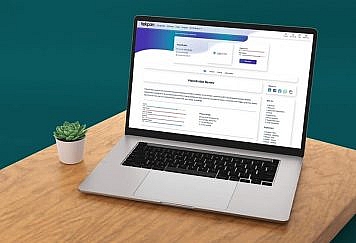Efficiency and creativity are essential to staying ahead of the competition in today’s fast-paced business environment. Processing invoices is one area where businesses may greatly improve their processes. Handling invoices by hand has always been labor-intensive and error-prone. But now that Robotic Process Automation (RPA) has become a reality, companies may effectively automate their billing procedures. In this post, we’ll look at how companies may use RPA to digitize their invoices and reap a host of other advantages.
Understanding RPA
Before diving into the specifics of how RPA can transform invoice processing, let’s clarify what RPA is. RPA stands for Robotic Process Automation, which is a technology that uses software robots or “bots” to automate repetitive and rule-based tasks. These bots can mimic human interactions with computer systems, making them ideal for handling invoice-related processes.
The Challenges of Manual Invoice Processing
Manual invoice processing involves several steps, from receiving the invoice to recording it, verifying details, and making payments. This manual approach often leads to several challenges:
- Errors: Data entry errors and misinterpretations of invoice contents are common in manual invoice processing, and they can result in operational inefficiencies and financial disparities.
- 2. Time-consuming: Manually entering, reviewing, and processing invoices takes a lot of time with traditional invoice management procedures. This slows down business operations and causes vendor payments to be delayed.
- Costs: Processing invoices manually has a high price tag that includes labor costs, possible late payment fines, and the cost of correcting mistakes and balancing imbalances.
- Lack of Visibility: Accurately tracking, managing, and reporting on financial transactions is difficult when invoices are manually managed since there is frequently no real-time visibility into the state of invoice processing.
How RPA Transforms Invoice Processing
Now, let’s explore how businesses can digitize their invoices with RPA and overcome these challenges:
- Automated Data Extraction: Automated data extraction with RPA involves using software robots to scan and retrieve information from invoices. By doing away with the necessity for manual data entry, this procedure guarantees efficiency and precision in recording crucial invoice information, including dates, invoice numbers, and vendor details.
- Data Validation and Verification: RPA facilitates data validation by cross-referencing the extracted invoice data with existing records within a company’s systems. This verification process ensures that the information is correct, reducing errors and discrepancies in financial transactions.
- Workflow Automation: Workflow automation with RPA allows for the automatic routing of invoices through predefined approval processes. By following set rules and criteria, RPA ensures that invoices move seamlessly through the approval chain, enhancing efficiency and consistency.
- Invoice Matching: RPA assists in matching invoices with corresponding purchase orders and receipts. This matching process helps companies confirm that invoices are legitimate and accurate, preventing overpayments or unauthorized expenses.
- Integration with Accounting Systems: RPA seamlessly integrates with accounting software, updating financial records and facilitating timely payments. This integration ensures that the invoice data flows smoothly into the company’s financial systems, reducing manual data entry.
- Error Reduction: Through the elimination of manual data entry and automated validation, RPA significantly reduces the occurrence of errors in invoice processing. This reduction in errors not only enhances accuracy but also leads to cost savings by avoiding financial discrepancies.
- Enhanced Reporting and Analytics: RPA-enabled digitization of invoices provides the data needed for generating detailed reports and conducting in-depth analytics. Businesses gain insights into spending patterns, vendor relationships, and other financial aspects, enabling data-driven decision-making.
- Scalability: RPA solutions are highly scalable, capable of handling large volumes of invoices without the need for a proportional increase in manpower. This scalability ensures that businesses can adapt to changing workloads and growth without major resource constraints.
- 24/7 Availability: RPA bots operate around the clock, enabling continuous invoice processing and immediate responsiveness to vendor inquiries. This 24/7 availability ensures that invoice-related tasks can be completed promptly, regardless of the time of day or night, enhancing overall efficiency in financial operations.
Implementation Steps
To successfully digitize invoices with RPA, businesses should follow these steps:
- Assessment: In the assessment phase, businesses evaluate their existing invoice processes to identify areas where RPA automation can bring the most benefits. This involves analyzing tasks, costs, and potential return on investment to determine the feasibility of implementing RPA.
- Select RPA Tools: Businesses must carefully choose the right Robotic Process Automation (RPA) software and tools that align with their specific automation needs and capabilities. This selection process involves considering factors like compatibility, scalability, and ease of integration.
- Design Workflows: During this phase, companies map out the step-by-step processes involved in invoice handling. They define the rules, decision points, and sequences that RPA bots will follow when automating tasks like data extraction, validation, and routing.
- Development: In the development stage, businesses build and configure the RPA bots based on the workflow designs created earlier. This involves programming the bots to execute tasks accurately, efficiently, and in compliance with established business rules.
- Deployment: Deployment marks the transition of RPA bots from development to production. It involves implementing the bots into the live environment where they start automating invoice processes. Continuous monitoring and adjustments are essential to ensure smooth operations.
- Continuous Improvement: In the context of digitizing invoices with RPA, continuous improvement refers to the ongoing process of fine-tuning and optimizing the automated workflows and RPA bots. Businesses regularly assess and adjust their processes to adapt to changing requirements, technology advancements, and to maximize the efficiency and accuracy of their invoice processing operations. It’s a commitment to perpetual enhancement in pursuit of operational excellence.
Conclusion
RPA-enabled invoice digitization is revolutionary for companies trying to improve productivity, cut down on errors, and take charge of their financial operations. Automating the tedious manual operations associated with processing invoices allows businesses to reallocate their human resources to more strategically focused and value-added duties. RPA is positioned to become more and more important in changing how companies handle their financial operations as technology develops. In the current digital economy, adopting RPA in invoice processing is not only a way to get a competitive edge, but also a must for relevance.
Follow TechStrange for more Technology, Business and Digital Marketing News.





